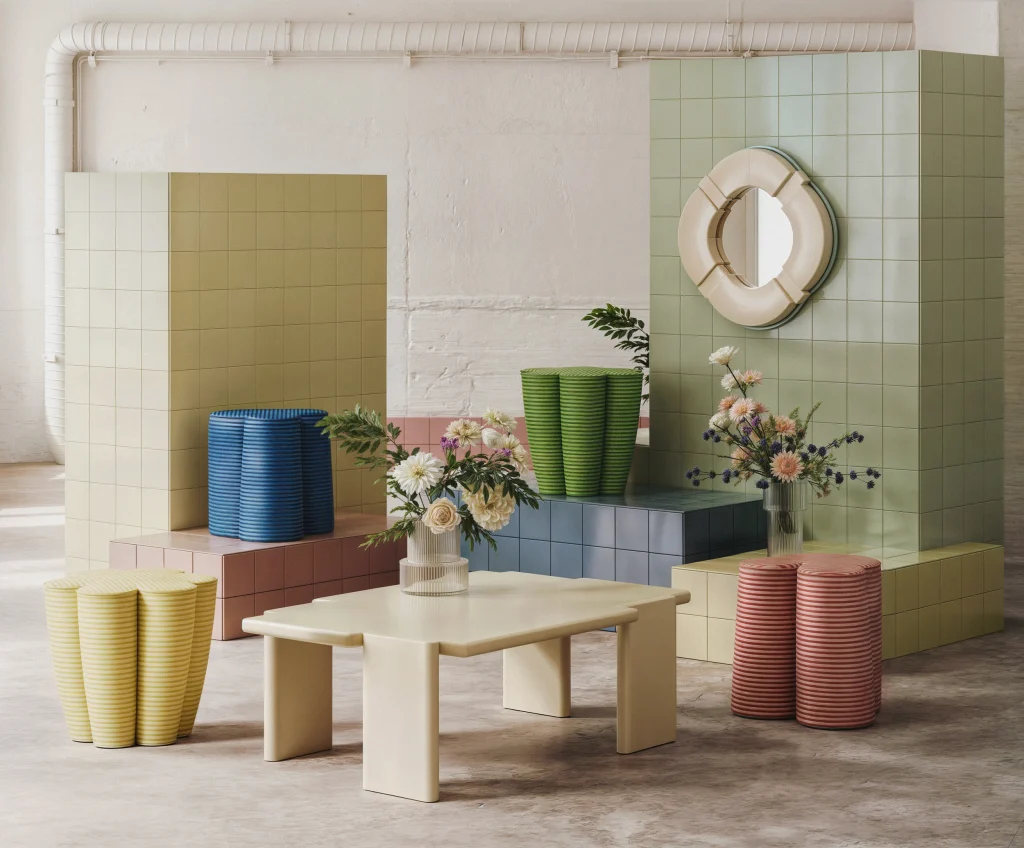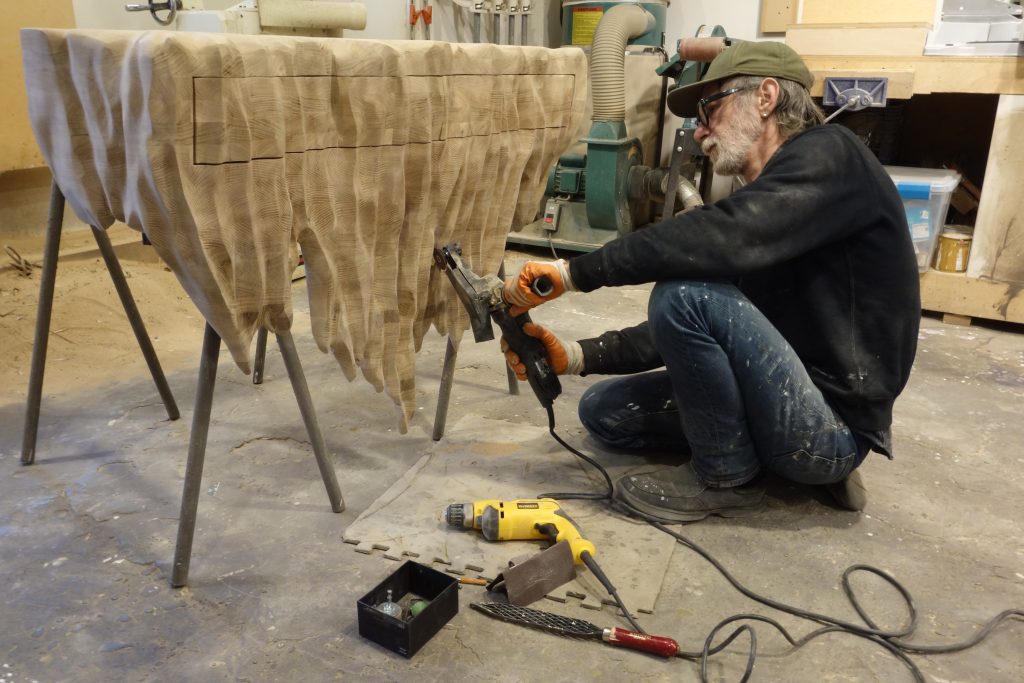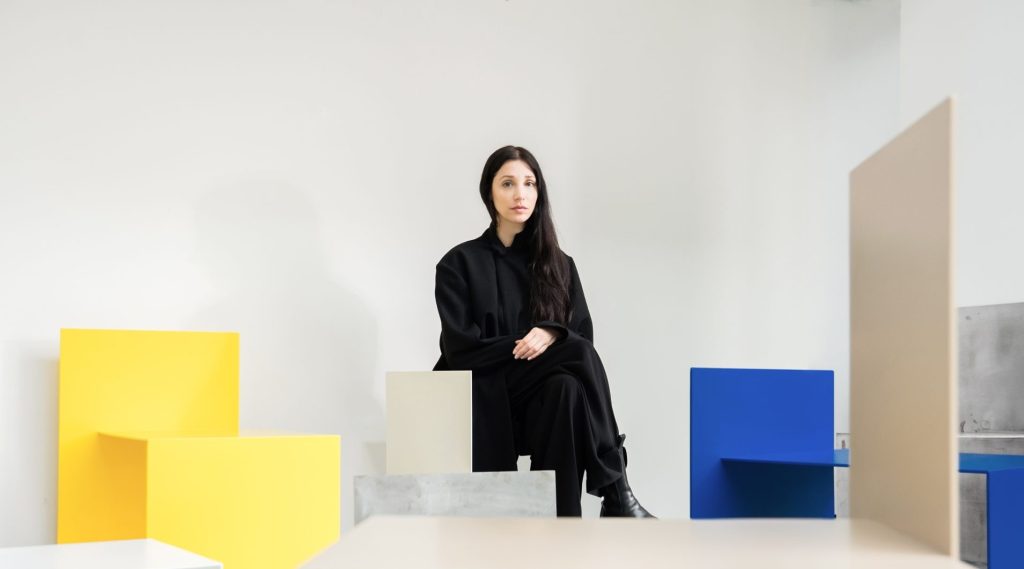Theodóra Alfreðsdóttir at Crossovers: Narrating the Stories of our Everyday Objects
“By being transparent about production we give each and every object a narrative that people can relate to.”
– Theodóra Alfreðsdóttir



View Thedóra Alfredsdottir’s works, “From the Ground Up”, in the Icelandic Collection at Crossovers.
There’s no doubt that storytelling has played an imperative role in humanity’s evolution, and across cultures even back to ancient Babylon have placed storytellers in high regard, think of tales such as the Epic of Gilgamesh which still are studied and retold to this day, . In hunter-gather times and in the days of early civilization, stories were essential in allowing communities to forging ahead as one group of people with a common goal, whether for navigation, locating seasonal food sources, or affirming a sense of community, we wouldn’t be in the place we are in society today without our ability to form narratives. This is how our advanced brains make sense of such complex notions of time and space; storytelling and narratives shape our relation to the outside world and where we fit into it. In order for us to relate to a photograph of ourselves at a younger age a narrative must first be created to show how what is now a piece of paper that one day soaked up some pigment, is actually us. Creating this narrative and emotional connection to the origin of this object, this piece of paper, has also in the process raised its value to us, creates its significance in our world and dictates how we care for this object.
Inspired by the importance of stories in our relation to a physical and material world, Icelandic designer Theodóra Alfreðsdóttir pleads to our love of narrative in promoting a holistic and full-circle approach to responsible consumption. In a post-modern and technologically advanced era, our objects are becoming increasingly more complex, instead of reading this article on a dried ink-stained, tree pulp, you are probably using a device that requires mining efforts of rare-earth materials from numerous locations across the globe. The extraction, transport, and refining of these minerals take its toll on the environment through the process. It may seem impossible to understand the full story of each one of these individual elements and thus our use of and relation to these objects may become distorted. Inspired by the abundant mineral feldspar, which covers 60% of the earth’s crust Alfreðsdóttir has created a series of table-ware for two comprised solely of this one mineral. Presented on a raw block of the mineral itself, we can appreciate the beauty of the objects once stacked upon themselves to form a totem, but we are also fully aware of these objects’ origins.
Today, story-tellers can be found in a variety of roles, its form and job description has evolved over the millennia and grown from its humble oral tradition to manifest itself across written and material languages. This era which we currently live in and many of the problems we face as a species in the near future arguably can be related back to hyperconsumerism, and the endless proliferation in our world of stuff without regard to its origins. In order for us to really solve these issues, we are going to have to rethink our relation to the world of objects from the ground up. By highlight the fascinating story of each of the necessary, mundane, or ornamental objects that we fill our world with, Alfreðsdóttir forces us to confront the effects of our consumption on nature and society. Her practice beautifully demonstrates the brave role designers of today play as our modern storytellers.
Theodóra Alfreðsdóttir, From the Ground Up. Credit: Fernando Laposse
How do you see your role as a designer when it comes to modern storytelling?
My work focuses on the process of making, and finding ways of illustrating that process in the final object, one way or another. The object often acts as documentation of its manufacturing process – a record of what went on between the machine, tools, craftsman and material, a factual narrative which I think is fascinating.
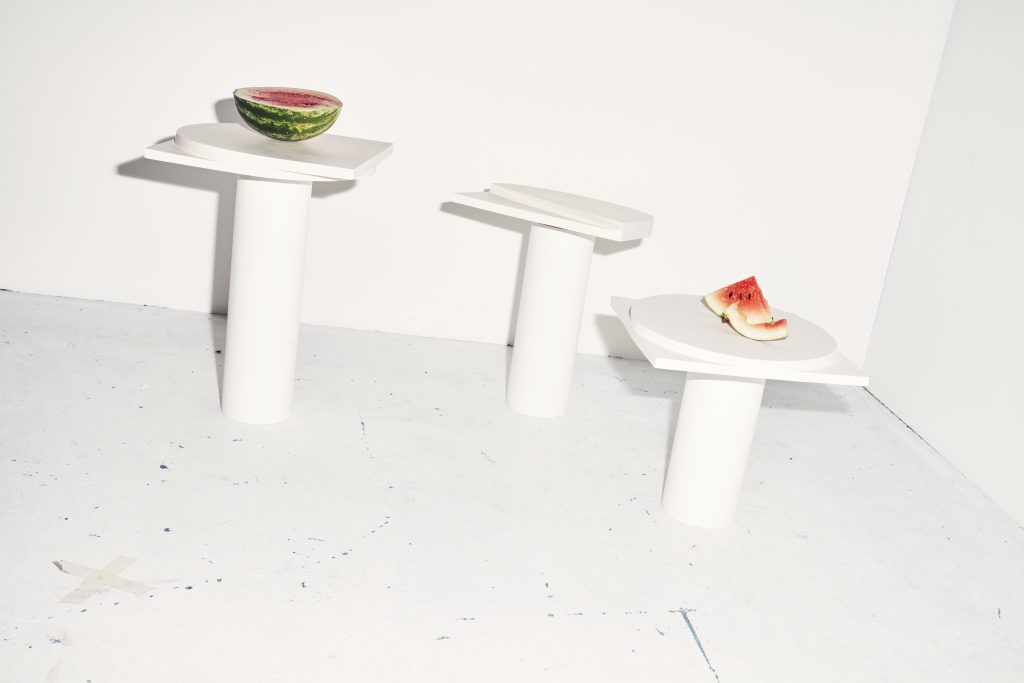

How does material choice and production play particularly import roles in your narratives?
Many of my projects start with a material or a process as a starting point, without having a set outcome. That gives space for play; allowing for explorations in materiality, as well our firmly established value systems and preconceived ideas of how something should look or be made. By finding ways of using material qualities in a new way or redefining processes – f.ex. turning something that would be considered a flaw into a positive, creating a unique piece (as I’ve done in my project Making of an object) or redefining a process and allowing the material to control the outcome (as done in my collaborative project Subterranean Formation) – can result in an outcome that would have never been reached otherwise. Mistakes and curiosity are key elements in those kind of projects.


Theodóra Alfreðsdóttir, Mould Experiments. Credit: Gulli Már
The work you’ll be showcasing at Crossovers, “From the Ground Up”, is a series of tableware centered on the mineral feldspar, what story did you want to tell about this mineral in your work?
Rocks hold a compelling power. Coming from Iceland – a country with little vegetation – the natural environment consisting mainly of rocks, which we have a strong spiritual relationship with, a curiosity arouse to find this power within our our domestic environment. The project is founded on the obscure significance of the mineral feldspar which makes up 60% of the earth’s crust as well is a key ingredient in many of our most familiar objects within the domestic environment. The notion that within the consumer landscape we are becoming more aware of the origin of our food and what it has taken for it to get to our local supermarket, as well as the fact that many of the materials that contain feldspar are very appropriate for tableware, formed the decision behind making a dining set. To be aware of what you are eating your food on is an equally fascinating story, to understand the transformation of the material from its natural state until it sits at your table. From The Ground Up is a simple dining set for two that stacks together to form a totem, each item an example of an everyday material made from feldspar. As a symbol of unity, the totem creates interrelations through the set which, when constructed, stands upon its common origin the stone itself.




What are some of your favorite narratives or possibly even works of literature that have inspired your work?
A book called Important Artifacts and Personal Property from the Collection of Lenore Doolan and Harold Morris by Leanne Shapton comes to mind. It’s a fictional auction catalogue where the belongings of a couple are being auctioned. Through that catalogue we get to know them and how their relationship evolves through the objects that are being auctioned and have had some sort of significance to them. Enough space is left for us as viewers to fill in the gaps and make up our own story around them which I really liked. Another similar thing I really enjoyed was Tomorrow, an exhibition by Elmgreen & Dragset, at the V&A in London a few years back. There you would walk into a space which looked like someone’s home and see all their personal items and get a feeling that someone was home. By walking around you would already read the space in your own way and start imagining things, but then you had a little booklet with a short story Elmgreen & Dragset had written about what had allegedly just happened in that space so you would start noticing other things and details in there. This mix of physical objects and fictional narratives is something that I find very intriguing.
Theodóra Alfreðsdóttir, Mould
Do you think that focusing on these stories of our everyday objects could have some greater societal impacts?
Yes for sure, I think it can help us regain more respect for our everyday objects and resources. Hopefully, this will encourage consumers to think about their purchases as something to keep for a lifetime, rather than something to discard when they see the next trending colours or design. This ties in with all these movements we see today where we as consumers are made to feel and understand that we are all responsible for whatever will happen in the coming decades. By being transparent about production we give each and every object a narrative that people can relate to. That might result in a connection that’s harder to break than the one we would have with an anonymous mass-produced object.
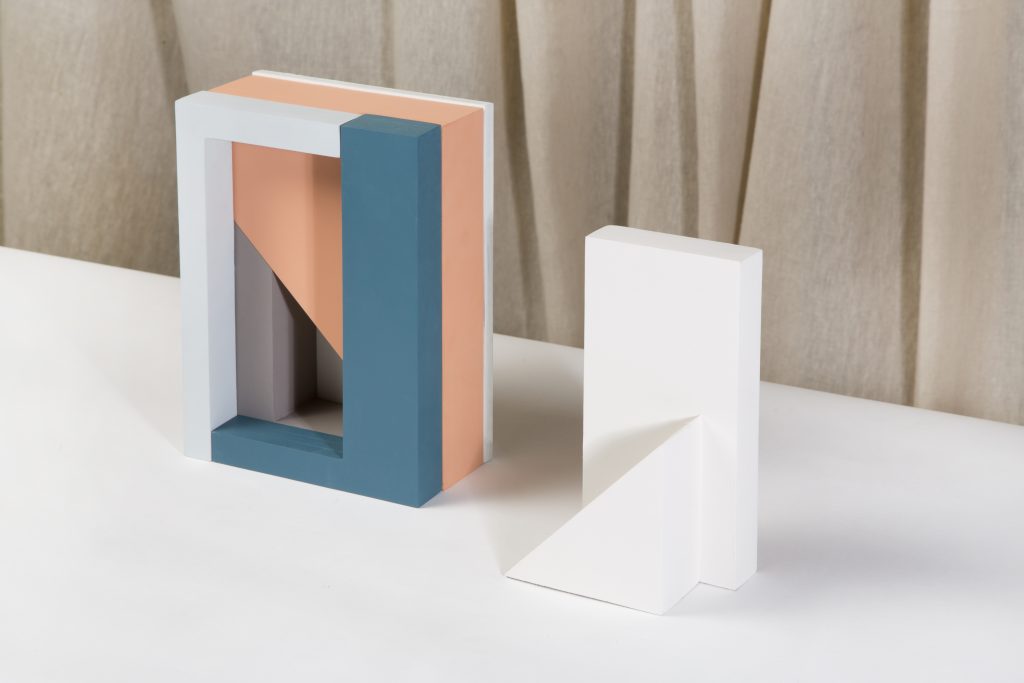



Crossovers by Adorno will present a range of collections of dynamic works by independent designers from a selection of local scenes. The exhibition celebrates the designers and communities playing a central role in maintaining and renewing today’s local design and crafts cultures. Theodóra Alfreðsdóttir’s work and the works presented in the Icelandic Collection by Hlin Helga Gudlaugsdottir & Maria Kristin Jonsdottir showcase a world of objects whose conceptual stories shed light on our responsibility and consumption habits, as well as the consequences we take as consumers in the globalized object world. Presenting these works together with works from 10 other top design scenes from around the world creates a cross-cultural dialogue to examine the current state and future of contemporary design.
To preview the Icelandic collection and stay up to date on the release of further news & previews sign up to our newsletter below.


Bio
Theodora is an Icelandic product designer based in London. She holds a bachelor’s degree in product design from the Iceland Academy of the Arts and a master’s degree in Design Products from the Royal College of Art in London in 2015. Theodora’s work revolves around the narrative an object can inhabit and exploring ways of objectifying that narrative. She’s interested in the way an object can act as documentation of its manufacturing process; a record of what went on between the machine, tools, craftsman, and material as well as it can communicate it’s origin and former life. That often leads to discovery of unexpected qualities as well as it gives the user a subtle opportunity to reconsider our material world and explore value in a different way.


